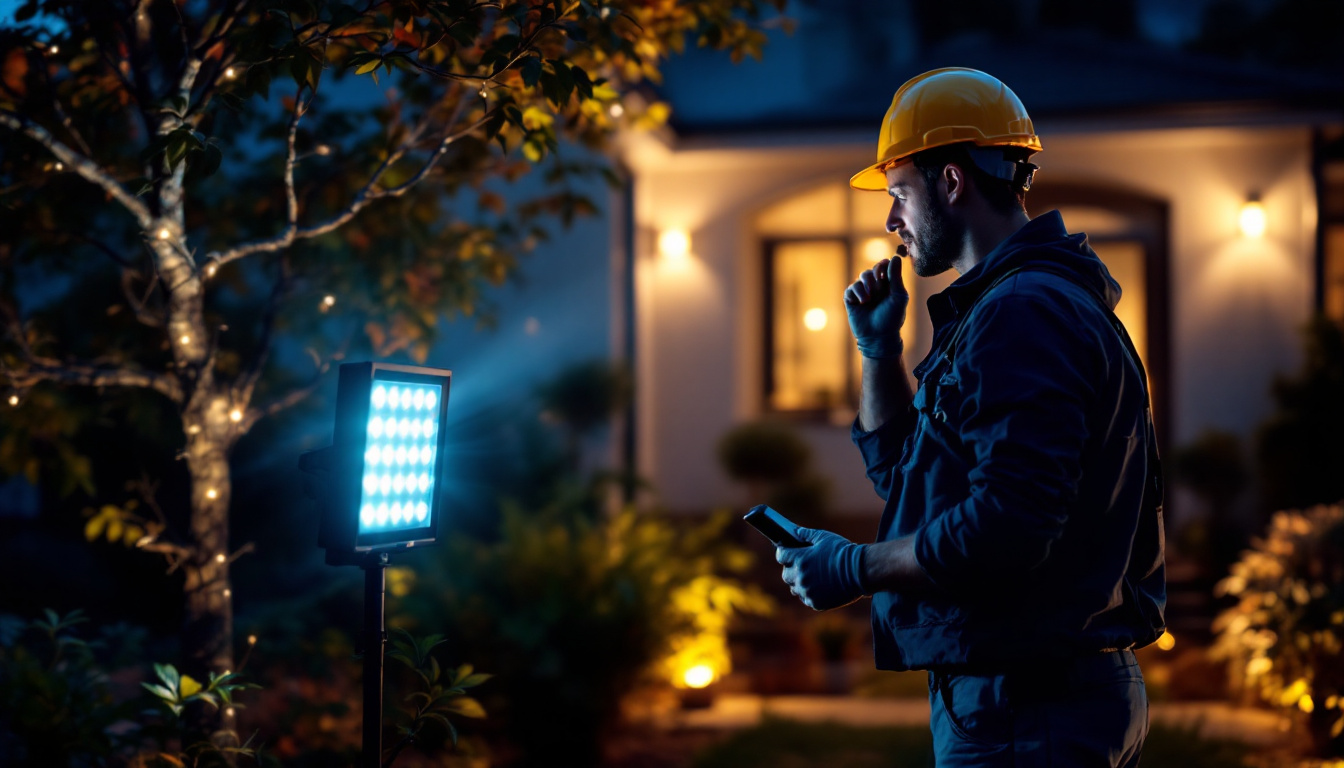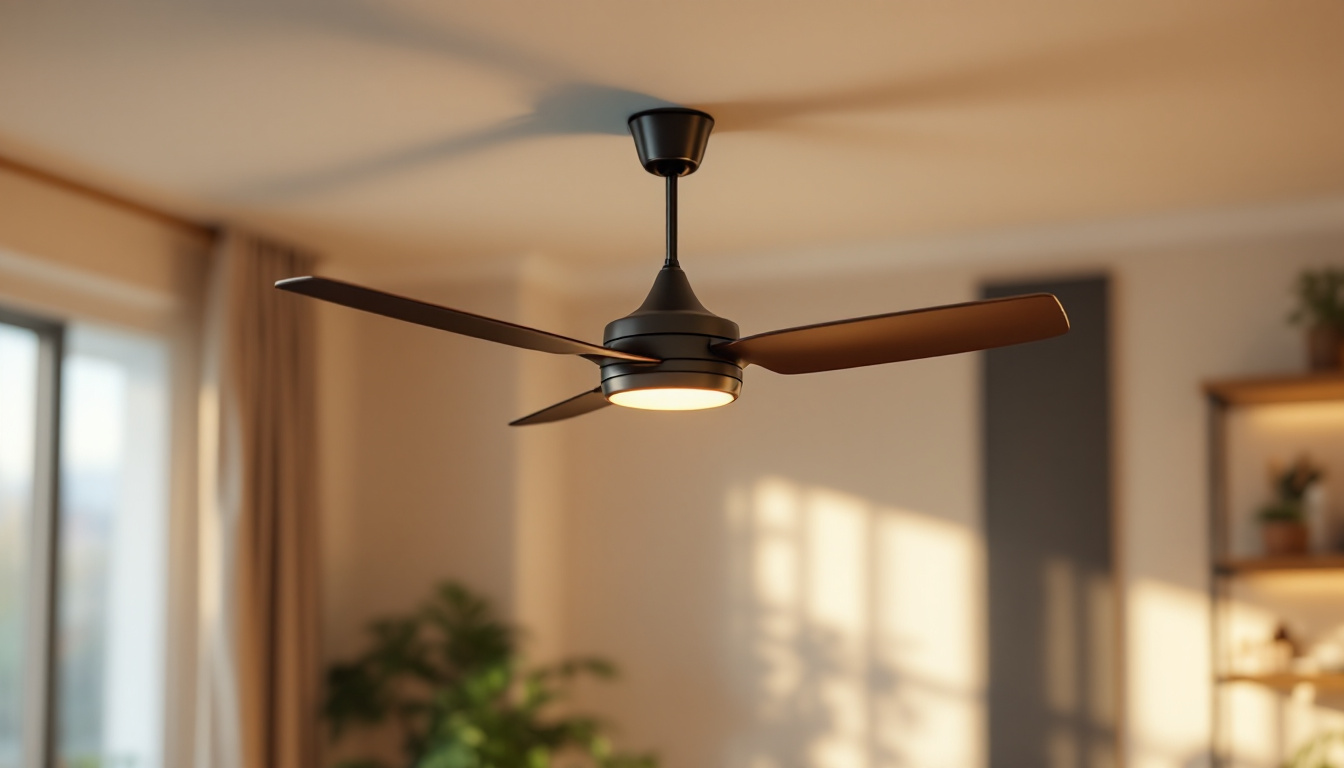

In the evolving world of outdoor lighting, solar flood lights have emerged as a popular choice for both residential and commercial applications. As energy efficiency and sustainability become increasingly important, lighting contractors are finding innovative ways to integrate solar flood lights into their projects. This article explores the top strategies that lighting contractors can employ to maximize the benefits of solar flood lights, ensuring that their clients receive optimal lighting solutions while contributing to environmental sustainability.
Before diving into strategies, it’s essential to grasp what solar flood lights are and how they function. Unlike traditional flood lights that rely on electricity from the grid, solar flood lights harness energy from the sun through solar panels. This energy is stored in batteries and used to power LED lights during the night. The technology behind solar flood lights has evolved significantly in recent years, leading to improved efficiency and performance, making them a reliable choice for outdoor lighting solutions.
The advantages of solar flood lights are numerous. They are cost-effective, reduce energy bills, and are easy to install since they do not require extensive wiring. Additionally, they are environmentally friendly, making them an attractive option for eco-conscious clients. The use of solar flood lights can also contribute to energy independence, allowing homeowners and businesses to rely less on traditional power sources, which can be particularly beneficial in areas prone to power outages or where electricity costs are high.
Solar flood lights typically consist of several key components: solar panels, batteries, LED lights, and a control system. Understanding these components is crucial for contractors when advising clients on the best options available. The quality and efficiency of each component can greatly influence the overall performance of the solar flood light system.
Solar panels convert sunlight into electricity, which is then stored in batteries. The LED lights provide bright illumination while consuming minimal energy. The control system manages the operation of the lights, including features such as motion sensors and timers, enhancing functionality and efficiency. Some advanced models even include smart technology, allowing users to control the lights remotely via smartphone apps, providing an added layer of convenience and customization. This integration of technology not only improves user experience but also enables better energy management, ensuring that lights are only on when needed.
For lighting contractors, promoting the benefits of solar flood lights can help in securing projects. These benefits include reduced installation costs, as there is no need for electrical wiring, and lower long-term operational costs due to the absence of electricity bills. Furthermore, the installation process is often quicker and less labor-intensive, allowing contractors to take on more projects in a shorter amount of time.
Moreover, solar flood lights are versatile and can be installed in various locations, including remote areas where traditional electrical sources are unavailable. This flexibility opens up new opportunities for contractors to expand their service offerings. They can be used for a wide range of applications, from illuminating pathways and driveways to enhancing security around commercial properties. Additionally, as communities become more focused on sustainability, the demand for solar solutions continues to rise, positioning contractors who specialize in solar flood lights as leaders in the green energy movement. The ability to provide clients with sustainable lighting options not only meets their immediate needs but also aligns with broader environmental goals, making it a win-win situation for all involved.
When it comes to installing solar flood lights, there are several strategies that lighting contractors can implement to ensure successful outcomes. Proper planning and execution are crucial for maximizing the performance and longevity of these lighting solutions.
A thorough site assessment is the first step in any successful installation. Contractors should evaluate the location for sunlight exposure, considering factors such as nearby trees, buildings, and other obstructions that may cast shadows on the solar panels.
Additionally, contractors should assess the intended use of the lighting. Whether the goal is to enhance security, illuminate pathways, or highlight landscaping features, understanding the client’s needs will inform the selection of appropriate solar flood lights.
Not all solar flood lights are created equal. Contractors should consider various factors when selecting the right model for a project. Key considerations include brightness (measured in lumens), battery capacity, and the quality of the solar panel.
Contractors should also evaluate additional features such as motion sensors, adjustable brightness settings, and remote control capabilities. These features can enhance the functionality of the lights and provide added value to clients.
The placement and orientation of solar flood lights play a significant role in their effectiveness. Ideally, solar panels should be positioned to receive maximum sunlight exposure throughout the day. This often means installing them on rooftops or other elevated surfaces that are free from obstructions.
Furthermore, the angle at which the solar panels are installed can impact their efficiency. A tilt that aligns with the sun’s path can significantly enhance energy absorption, leading to better performance during nighttime hours.
To ensure that solar flood lights continue to operate effectively over time, maintenance is essential. Lighting contractors should educate clients on proper maintenance practices to prolong the life of their solar lighting systems.
Solar panels can accumulate dirt, dust, and debris, which can hinder their ability to absorb sunlight. Contractors should recommend regular cleaning of the solar panels to maintain optimal performance. This can be as simple as wiping them down with a soft cloth or using water to rinse off any buildup.
In addition to the panels, the LED lights should also be kept clean to ensure maximum brightness. A quick inspection and cleaning can make a significant difference in the overall effectiveness of the lighting system.
Battery maintenance is another critical aspect of ensuring the longevity of solar flood lights. Contractors should advise clients on the importance of periodically checking the battery’s health and replacing it when necessary. Most solar flood lights are equipped with rechargeable batteries, which have a limited lifespan and may need replacement every few years.
Educating clients about signs of battery failure, such as dimming lights or inconsistent performance, can help them take proactive measures to maintain their lighting systems.
Client satisfaction is paramount for lighting contractors, and solar flood lights can be an excellent way to exceed client expectations. By implementing effective strategies, contractors can ensure that clients receive the best possible lighting solutions.
Every client has unique needs and preferences. Lighting contractors should take the time to understand these requirements and offer customized solar flood lighting solutions. This could involve designing a lighting layout that highlights specific features of a property or selecting lights with adjustable brightness settings to suit different occasions.
By providing tailored solutions, contractors can demonstrate their commitment to client satisfaction and build long-lasting relationships.
Education is a powerful tool in enhancing client satisfaction. Lighting contractors should take the initiative to educate clients about the benefits of solar flood lights, how they work, and the importance of proper maintenance.
Offering workshops, informational brochures, or one-on-one consultations can empower clients to make informed decisions about their lighting needs. This not only builds trust but also positions the contractor as a knowledgeable expert in the field.
As the demand for solar flood lights continues to grow, effective marketing strategies become essential for lighting contractors. Highlighting the advantages of these systems can attract new clients and differentiate contractors in a competitive market.
In today’s digital age, having a strong online presence is crucial for any business. Lighting contractors should leverage digital marketing strategies to promote their solar flood light offerings. This can include creating informative blog posts, engaging social media content, and targeted online advertisements.
Showcasing successful projects through before-and-after photos can also serve as powerful testimonials, demonstrating the effectiveness of solar flood lights in real-world applications.
Building relationships with other professionals in the industry can open doors to new opportunities. Lighting contractors should consider networking with architects, landscapers, and builders who may require solar flood lighting solutions for their projects.
Collaborating with local environmental organizations can also enhance credibility and attract clients who prioritize sustainability. By establishing partnerships, contractors can expand their reach and create a referral network that benefits all parties involved.
The solar flood lighting industry is continuously evolving, with new technologies and trends emerging regularly. Staying informed about these developments can help lighting contractors remain competitive and provide the best solutions for their clients.
One of the most significant trends in solar flood lighting is the integration of smart technology. Features such as remote control, smartphone apps, and smart home compatibility are becoming increasingly popular. Contractors should familiarize themselves with these technologies to offer clients the latest advancements in solar lighting.
Smart technology not only enhances convenience but also allows for better energy management. Clients can monitor their energy usage and adjust settings remotely, leading to increased efficiency and cost savings.
As battery technology continues to advance, solar flood lights are becoming more efficient and reliable. Newer battery types, such as lithium-ion, offer longer lifespans and faster charging times compared to traditional lead-acid batteries.
Contractors should stay updated on these advancements and consider recommending the latest battery technologies to clients, ensuring they receive the best performance from their solar flood lighting systems.
Solar flood lights represent a significant opportunity for lighting contractors to provide sustainable, cost-effective, and versatile lighting solutions. By understanding the technology, employing effective installation strategies, and prioritizing client satisfaction, contractors can successfully integrate solar flood lights into their offerings.
As the industry continues to evolve, staying informed about trends and advancements will be crucial for maintaining a competitive edge. With the right approach, lighting contractors can illuminate the path toward a brighter, more sustainable future for their clients.

Discover why ceiling fans are a crucial consideration for lighting contractors.

Discover how partnering with lighting contractors can illuminate your business’s potential.

Discover expert insights and practical tips for lighting contractors on optimizing recessed ceiling lighting.

Explore the pros and cons of garden solar lights compared to traditional alternatives in this insightful guide for lighting contractors.
Get notified when NEW deals are released.
Optimize your budget with wholesale discounts.
Only top-quality, specification-grade lighting products.
No additional costs at checkout - what you see is what you pay.
We understand the unique needs of contractors.